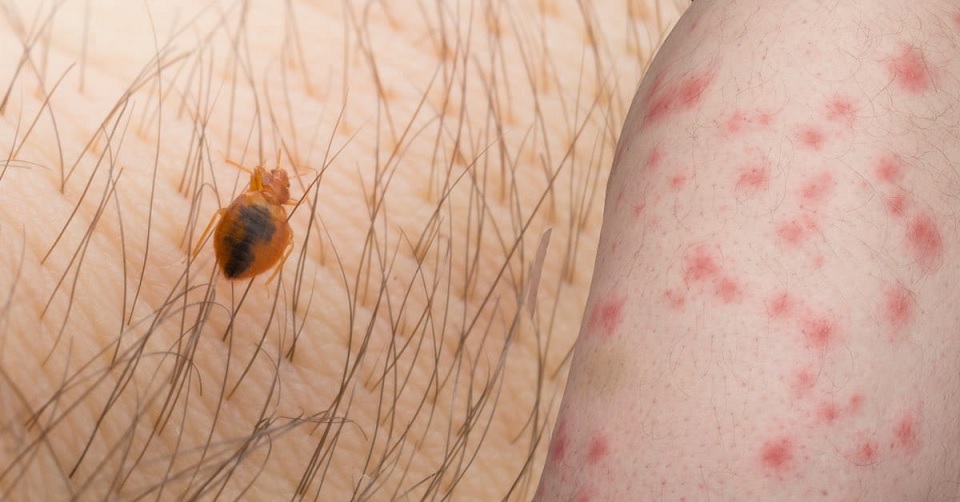Bed bug bites are an unwelcome nuisance that can disrupt sleep and lead to physical discomfort. These tiny pests often infest homes, hotels, and other sleeping areas, making it vital to understand their behavior, the symptoms of their bites, and effective ways to manage and prevent them. This article will explore everything about bed bug bites, including how to identify them, treat them, and safeguard your home against these persistent invaders.
What Are Bed Bugs?
Bed bugs are small, oval-shaped insects that feed on the blood of humans and animals. They belong to the family Cimicidae and are reddish-brown in color. Adult bed bugs are approximately the size of an apple seed, while nymphs are smaller and lighter in color.
Where Are Bed Bugs Found?
Bed bugs are commonly found in:
- Mattresses and box springs
- Furniture cracks and crevices
- Carpets and rugs
- Curtains and wall hangings
- Electrical outlets and behind wallpaper
Their nocturnal nature makes them difficult to detect until bites or infestations become apparent.
How to Identify Bed Bug Bites
Appearance of Bed Bug Bites
Bed bug bites are small, red, and often appear in clusters or lines on exposed skin areas like the arms, legs, neck, and face. Key features include:
- Redness and Swelling: Bites often have a red, swollen center surrounded by inflamed skin.
- Itchy Welts: Bed bug bites cause intense itching, similar to mosquito bites.
- Patterns: Bites frequently appear in a zigzag or straight-line pattern due to the bed bug feeding multiple times in one area.
Differentiating Bed Bug Bites from Other Insect Bites
It can be challenging to distinguish bed bug bites from other insect bites. Here’s a quick comparison:
- Mosquito Bites: Usually larger and less clustered than bed bug bites.
- Flea Bites: Typically found on ankles and have a red halo around the center.
- Allergic Reactions: May resemble bites but often spread over the body in non-specific patterns.
Symptoms of Bed Bug Bites
Bed bug bites can vary in severity depending on individual sensitivity. Common symptoms include:
- Itching and Irritation: A primary symptom that can persist for days.
- Redness and Swelling: More prominent in individuals with sensitive skin or allergies.
- Blistering: In severe cases, bites can blister and become painful.
Allergic Reactions to Bed Bug Bites
Some people may experience allergic reactions, such as:
- Hives
- Difficulty breathing (in rare cases)
- Secondary infections from excessive scratching
Treating Bed Bug Bites
Home Remedies for Bed Bug Bites
- Wash the Affected Area
Clean the bites with soap and water to reduce the risk of infection and soothe irritation. - Apply Cold Compresses
Use a clean cloth dipped in cold water to reduce swelling and itching. - Use Calamine Lotion or Aloe Vera
These provide relief from itching and promote healing. - Take Antihistamines
Over-the-counter antihistamines can help alleviate itching and allergic reactions.
When to See a Doctor
Seek medical attention if:
- Bites become infected (pus, redness, or warmth).
- You experience severe allergic reactions.
- Symptoms persist beyond two weeks.
How to Confirm a Bed Bug Infestation
If you suspect bed bugs in your home, look for these signs:
- Rusty or Reddish Stains on Sheets: Caused by crushed bed bugs.
- Dark Spots: Fecal matter that looks like ink stains.
- Eggshells and Shed Skins: Left behind as bed bugs grow.
- Live Bugs: Visible in mattress seams or furniture joints.
Preventing Bed Bug Bites
Tips to Protect Yourself While Sleeping
- Use Protective Mattress Covers
Encase mattresses and box springs with zippered, bed-bug-proof covers. - Avoid Secondhand Furniture
Inspect and clean any used furniture before bringing it into your home. - Wash Bedding Regularly
Use hot water to wash sheets and blankets, and dry them at high heat. - Declutter Your Bedroom
Minimize hiding spots by keeping your sleeping area clean and clutter-free.
Dealing with a Bed Bug Infestation
DIY Methods to Get Rid of Bed Bugs
- Vacuum Thoroughly: Pay attention to mattresses, furniture, and carpets. Dispose of the vacuum bag immediately after use.
- Steam Cleaning: High heat kills bed bugs and their eggs.
- Diatomaceous Earth: A natural powder that dehydrates and kills bed bugs.
Professional Extermination
If the infestation is severe, hire pest control experts. They use methods like heat treatments, pesticides, and fumigation to eradicate bed bugs effectively.
Myths About Bed Bug Bites
Common Misconceptions
- “Bed Bugs Only Live in Dirty Homes”
False. Bed bugs thrive in clean and cluttered environments alike. - “Bed Bugs Transmit Diseases”
Bed bugs are not known to spread diseases, though their bites can cause discomfort and allergic reactions. - “You Can Feel Bed Bugs Bite”
Bed bugs inject an anesthetic and anticoagulant, making their bites painless at first.
Psychological Impact of Bed Bug Bites
Living with bed bugs can lead to:
- Sleep Disturbances: Constant worry about being bitten at night.
- Stress and Anxiety: Fear of social stigma and persistent infestations.
- Post-Traumatic Stress Disorder (PTSD): In extreme cases, prolonged exposure to infestations can result in PTSD-like symptoms.
Bed Bug Bite FAQs
Q1: Are Bed Bug Bites Dangerous?
While bed bug bites are not life-threatening, they can cause significant discomfort and allergic reactions in sensitive individuals.
Q2: Can Bed Bugs Infest My Clothes?
Yes, bed bugs can hide in clothing and luggage, which is why it’s essential to inspect and wash these items after traveling.
Q3: How Long Do Bed Bug Bites Last?
Bites typically heal within 1–2 weeks, though symptoms may persist longer in some cases.
Q4: Can Pets Get Bed Bug Bites?
Yes, bed bugs can bite pets, but they prefer feeding on human blood.
Conclusion
Bed bug bites, while not dangerous, can cause significant physical and emotional discomfort. Understanding how to identify, treat, and prevent these bites is essential for maintaining a healthy, stress-free environment. If you suspect an infestation, act promptly to avoid the problem escalating. Whether you choose DIY methods or professional help, vigilance is key to keeping your home bed-bug-free.
Stay proactive, and don’t let these pesky insects take over your peace of mind!


